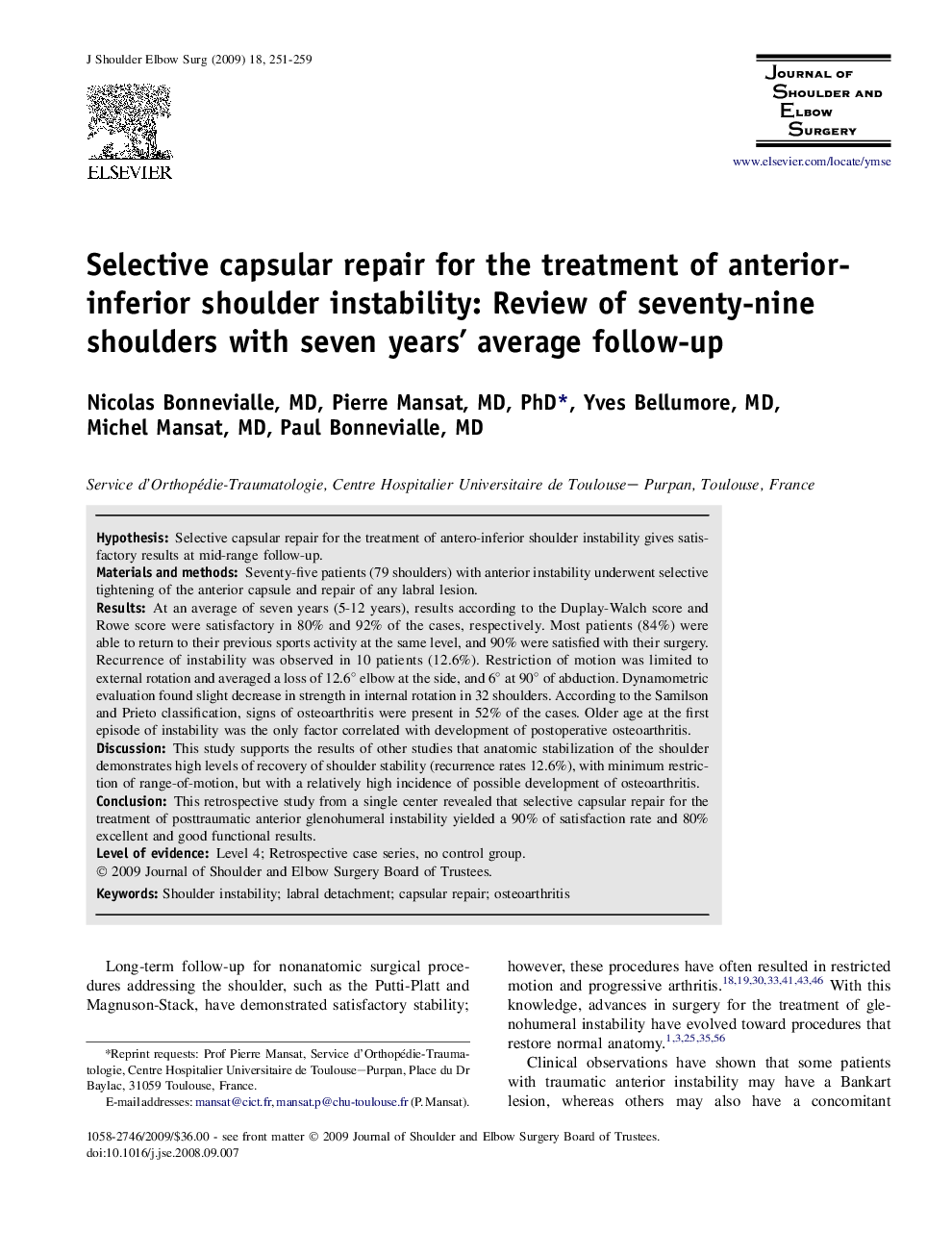| Article ID | Journal | Published Year | Pages | File Type |
|---|---|---|---|---|
| 4075496 | Journal of Shoulder and Elbow Surgery | 2009 | 9 Pages |
HypothesisSelective capsular repair for the treatment of antero-inferior shoulder instability gives satisfactory results at mid-range follow-up.Materials and methodsSeventy-five patients (79 shoulders) with anterior instability underwent selective tightening of the anterior capsule and repair of any labral lesion.ResultsAt an average of seven years (5-12 years), results according to the Duplay-Walch score and Rowe score were satisfactory in 80% and 92% of the cases, respectively. Most patients (84%) were able to return to their previous sports activity at the same level, and 90% were satisfied with their surgery. Recurrence of instability was observed in 10 patients (12.6%). Restriction of motion was limited to external rotation and averaged a loss of 12.6° elbow at the side, and 6° at 90° of abduction. Dynamometric evaluation found slight decrease in strength in internal rotation in 32 shoulders. According to the Samilson and Prieto classification, signs of osteoarthritis were present in 52% of the cases. Older age at the first episode of instability was the only factor correlated with development of postoperative osteoarthritis.DiscussionThis study supports the results of other studies that anatomic stabilization of the shoulder demonstrates high levels of recovery of shoulder stability (recurrence rates 12.6%), with minimum restriction of range-of-motion, but with a relatively high incidence of possible development of osteoarthritis.ConclusionThis retrospective study from a single center revealed that selective capsular repair for the treatment of posttraumatic anterior glenohumeral instability yielded a 90% of satisfaction rate and 80% excellent and good functional results.Level of evidenceLevel 4; Retrospective case series, no control group.
